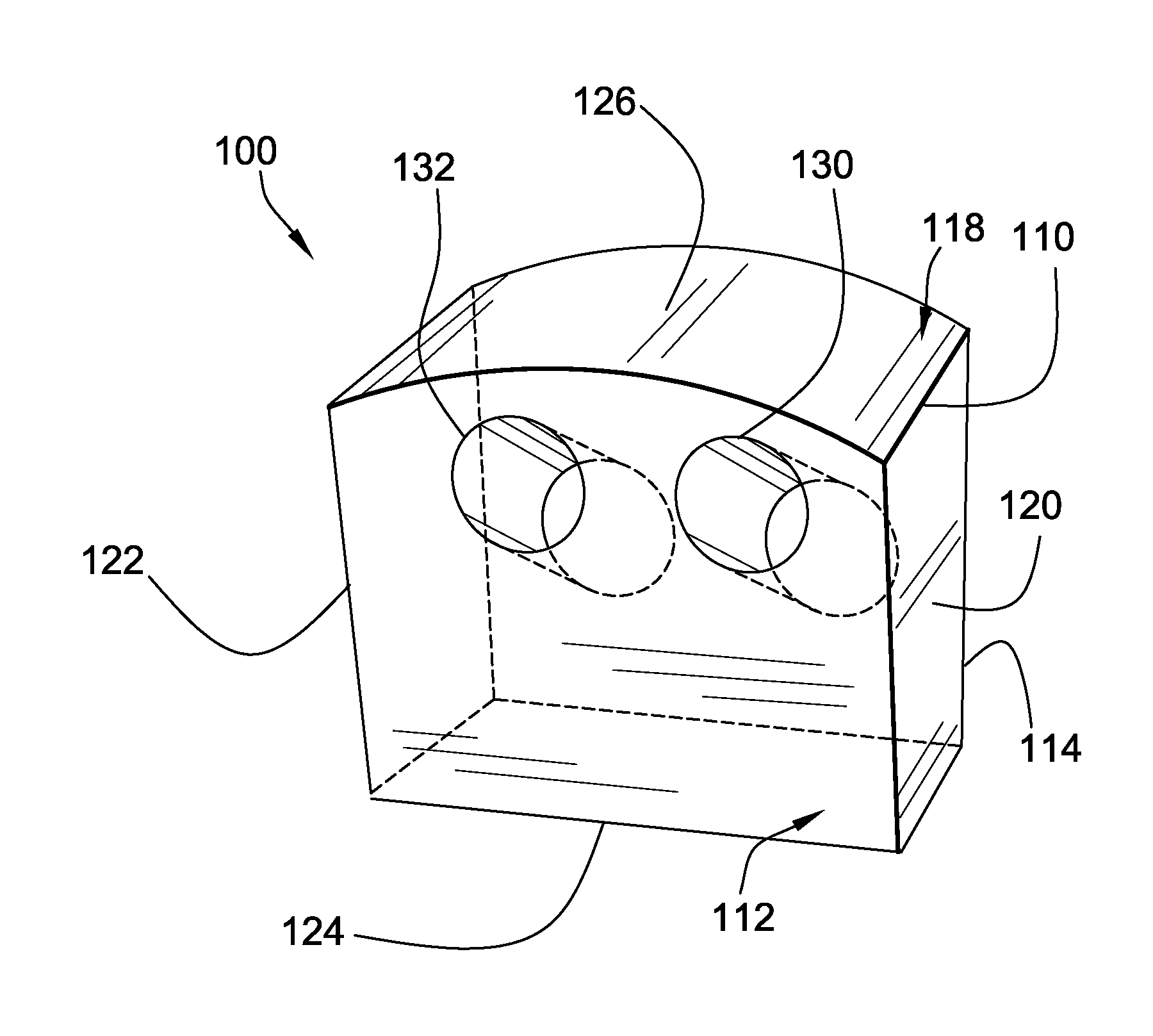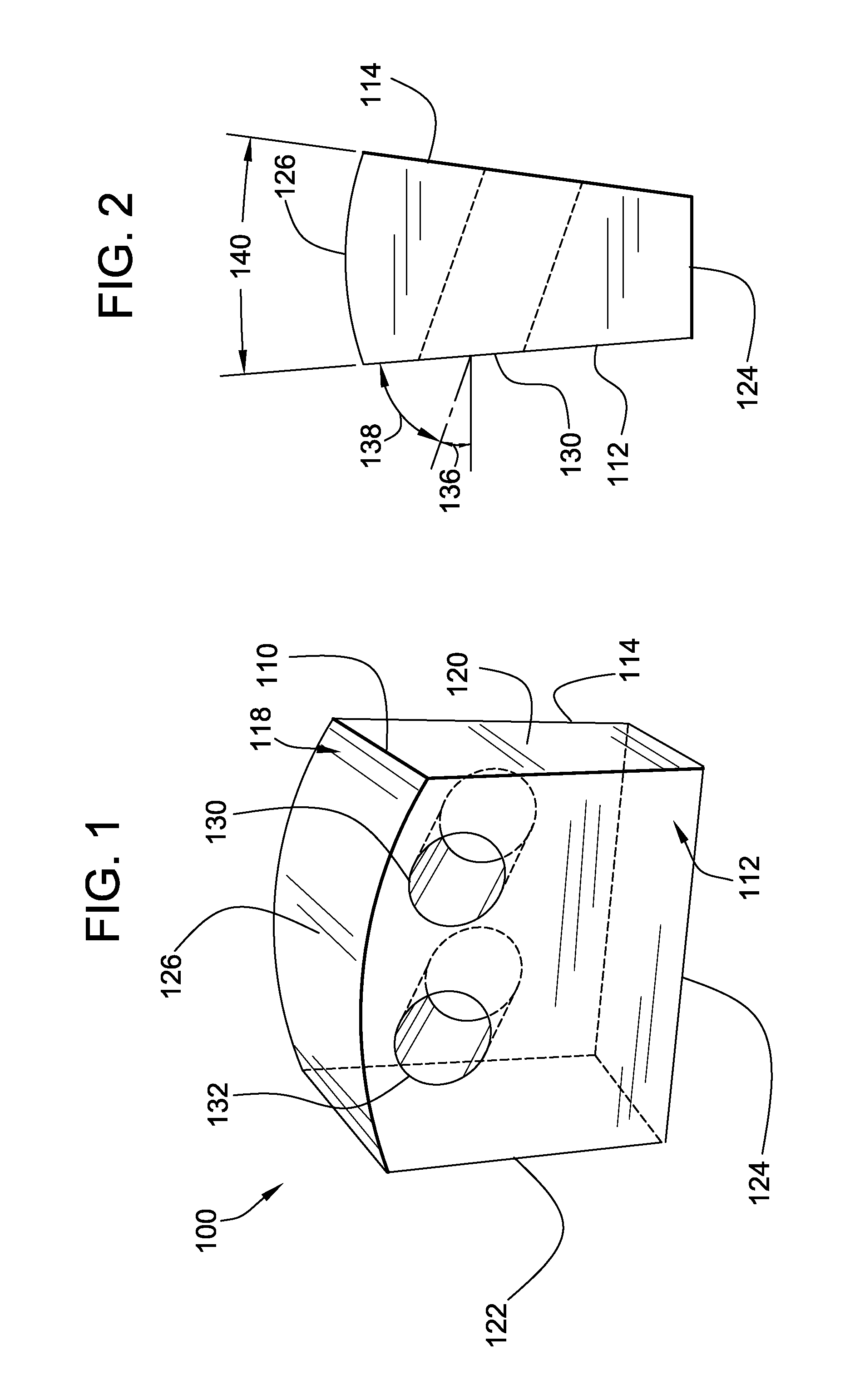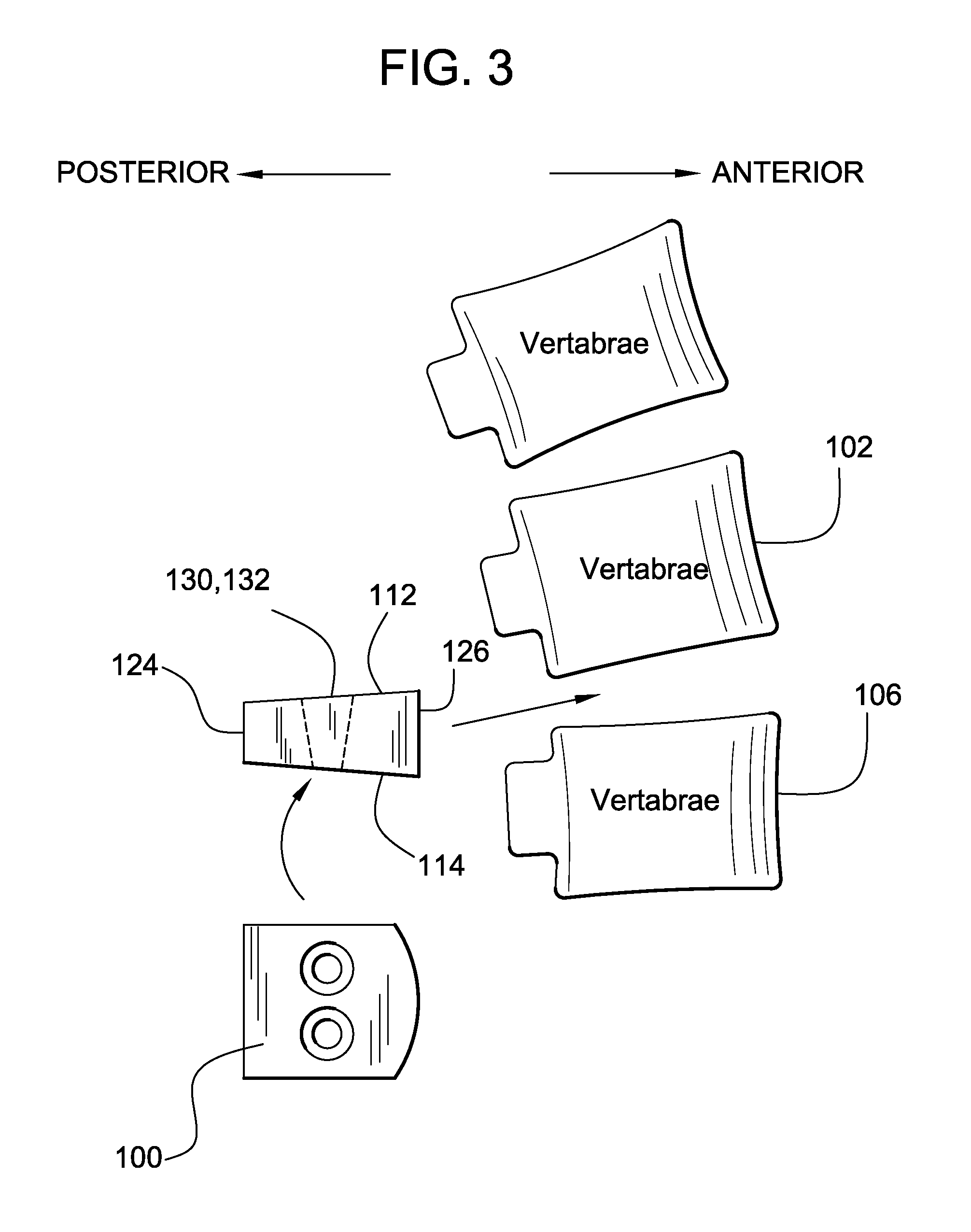Intervertebral Spinal Implant and Method of Making the Same
a technology which is applied in the field of spinal implants and implants, can solve the problems of degeneration or damage of the spinal disc, and achieve the effects of optimizing the retention of osteogenic material, promoting bone growth, and promoting fusion of two adjacent vertebra
- Summary
- Abstract
- Description
- Claims
- Application Information
AI Technical Summary
Benefits of technology
Problems solved by technology
Method used
Image
Examples
Embodiment Construction
[0033]Now referring to the drawings, wherein like numbers refer to like elements, there is illustrated in FIGS. 1 and 2 an intervertebral implant 100 that can replace a damaged or ruptured intervertebral disk within the spinal column. The generally solid implant 100 can have a block-like shape including a generally flat body 110 including a first surface 112, an opposing second surface 114 and a peripheral surface 118 extending between the opposed first and second surfaces. In the illustrated embodiment, the intervertebral implant 100 can have a “D” shape in which the peripheral surface 118 further includes a first straight lateral edge 120, a second straight lateral edge 122 parallel to and spaced apart from the first lateral edge, and a third straight edge 124 extending between the first and second lateral edges. The peripheral surface further includes a curved edge 126 extending between the first and second edges 120, 122 and directed away from the third edge 124. As can be appre...
PUM
| Property | Measurement | Unit |
|---|---|---|
| Angle | aaaaa | aaaaa |
| Angle | aaaaa | aaaaa |
| Thickness | aaaaa | aaaaa |
Abstract
Description
Claims
Application Information
 Login to View More
Login to View More - R&D
- Intellectual Property
- Life Sciences
- Materials
- Tech Scout
- Unparalleled Data Quality
- Higher Quality Content
- 60% Fewer Hallucinations
Browse by: Latest US Patents, China's latest patents, Technical Efficacy Thesaurus, Application Domain, Technology Topic, Popular Technical Reports.
© 2025 PatSnap. All rights reserved.Legal|Privacy policy|Modern Slavery Act Transparency Statement|Sitemap|About US| Contact US: help@patsnap.com



